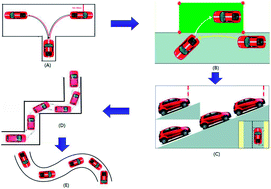Study of driving skill level discrimination based on human physiological signal characteristics
Abstract
The primary purpose of the study is to distinguish the differences in driving skill between novice and experienced drivers from the viewpoint of human cognitive behavior. Firstly, EEG (electroencephalogram) signals were collected using EEG acquisition equipment called Neuroscan. The δ sub-band and EOG (electrooculogram) signals were extracted from the EEG. Furthermore, the eye movement rate and the sample entropy (SampEn) values of δ sub-bands were calculated. Finally, the heart rate variability (HRV) characteristics, calculated using the SampEn algorithm, were used to analyze driving skill. The final result showed that human physiological signals (EEG, EOG and ECG (electrocardiogram)) could effectively distinguish different driving skills.



 Please wait while we load your content...
Please wait while we load your content...